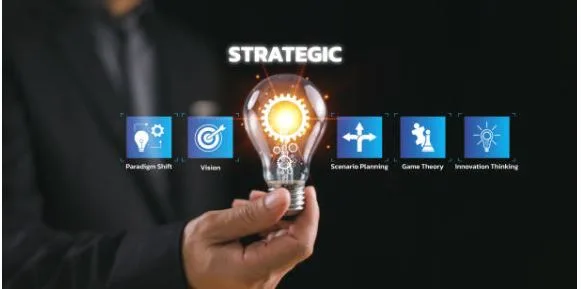What Can Jewelry ERP Reporting with Power BI Do?
In the fast-paced world of jewelry manufacturing and retail, businesses face unique challenges in managing complex supply chains, fluctuating customer demands, and intricate production processes. Data is at the core of every decision, yet too often, it is siloed, scattered, and difficult to interpret. This is where the integration of Enterprise Resource Planning (ERP) systems with advanced analytics tools like Microsoft Power BI can transform operations. Jewelry ERP reporting with Power BI goes beyond standard reporting capabilities by delivering real-time insights, visual dashboards, and actionable intelligence tailored to the needs of jewelry businesses. It helps companies understand their performance across departments, streamline operations, and remain competitive in a market that demands both precision and creativity.
Why Traditional Reporting Falls Short
Traditional ERP systems come with built-in reporting tools, but they often produce static and limited reports. These reports require manual formatting, lack interactivity, and fail to provide the big picture that decision-makers need. In the jewelry sector, where data spans sales, production, inventory, and customer preferences, static reports cannot keep up with the pace of change. For example, tracking gemstone procurement costs, analyzing seasonal trends in demand, or monitoring vendor performance requires more than just spreadsheets and generic ERP reports. Jewelry ERP reporting with Power BI bridges this gap by enabling businesses to move from descriptive reporting to dynamic analysis. Instead of simply looking at what happened, companies can explore why it happened and predict what might happen next.
Centralized and Integrated Insights
One of the biggest advantages of jewelry ERP reporting with Power BI is the ability to bring all business data together in one place. Jewelry businesses deal with data from multiple sources: raw material purchases, vendor negotiations, workshop production, quality control, wholesale and retail distribution, and customer service. Power BI integrates seamlessly with ERP databases and external sources, consolidating this data into a unified model. This means a jewelry business can view its operations holistically. A CEO can access a dashboard that combines production efficiency with sales performance, while a sales manager can dive into real-time insights about which product lines are driving revenue growth. The centralized approach eliminates data silos and ensures that decisions are based on a single version of the truth.
Enhanced Sales and Customer Analytics
Jewelry retail thrives on customer insights and sales performance. Jewelry ERP reporting with Power BI empowers sales teams with detailed analytics about purchasing behavior, seasonal preferences, and regional trends. For instance, a dashboard might reveal that custom engagement rings are outperforming mass-market jewelry in certain urban markets, while gold bangles dominate sales in another region. These insights enable targeted marketing campaigns, better inventory planning, and improved customer experiences. With Power BI, businesses can analyze key sales metrics such as conversion rates, average transaction value, and customer lifetime value. They can also identify cross-sell and upsell opportunities by studying purchasing patterns, helping to maximize revenue and strengthen customer loyalty.
Inventory Optimization
Inventory is one of the most significant challenges in the jewelry industry. Overstocking ties up valuable capital, while understocking risks lost sales. Jewelry ERP reporting with Power BI provides real-time visibility into stock levels, turnover rates, and demand forecasts. Advanced visualizations can highlight slow-moving items or rising trends so that businesses can adjust procurement strategies accordingly. By combining ERP inventory data with Power BI’s forecasting capabilities, jewelers can anticipate seasonal demand, optimize reordering schedules, and reduce carrying costs. For manufacturers, the system also ensures that raw materials such as gemstones and precious metals are tracked accurately, minimizing waste and improving production planning.
Financial Transparency and Control
Financial performance is a top priority for jewelry businesses, where margins can be thin and costs fluctuate due to raw material prices. Jewelry ERP reporting with Power BI offers CFOs and finance teams deeper insights into revenue, expenses, profitability, and cash flow. Interactive dashboards enable real-time monitoring of financial KPIs such as gross margin, operating expenses, and net profit. Instead of waiting for month-end reports, decision-makers can view up-to-date numbers and respond quickly to financial challenges. Additionally, Power BI can consolidate financial data from multiple locations or business units, giving a complete view of enterprise-wide financial health. This transparency ensures more accurate budgeting, forecasting, and strategic planning.
Supply Chain and Vendor Performance
Jewelry businesses often work with a wide range of suppliers, from gemstone dealers to metal refiners. Managing supplier performance and procurement costs is critical to profitability. Jewelry ERP reporting with Power BI provides detailed vendor scorecards that track delivery timelines, quality issues, and pricing trends. Procurement teams can use these insights to negotiate better terms, identify reliable partners, and mitigate supply chain risks. By analyzing lead times and vendor reliability, businesses can ensure that production remains on schedule and customers receive their orders on time.
Quality Control and Compliance
In the jewelry industry, maintaining quality and adhering to regulatory standards is non-negotiable. Jewelry ERP reporting with Power BI enables businesses to track quality control metrics, monitor defect rates, and ensure compliance with international standards. Reports can highlight recurring quality issues in specific production batches, helping managers address root causes quickly. Additionally, Power BI’s drill-down features allow businesses to investigate compliance-related data, such as sourcing certifications for diamonds or ethical procurement of precious metals. This level of transparency not only safeguards brand reputation but also builds customer trust.
Predictive and Prescriptive Analytics
While descriptive analytics tells businesses what has happened, predictive and prescriptive analytics provide a competitive edge by forecasting future outcomes and recommending actions. Jewelry ERP reporting with Power BI uses machine learning models and advanced algorithms to identify trends and predict future demand. For example, predictive models might forecast a rise in demand for platinum jewelry in a particular demographic. Prescriptive analytics can go a step further by suggesting how to allocate marketing spend or adjust production schedules to capture that demand. This level of intelligence turns data into actionable strategies that drive growth.
Mobility and Accessibility
Decision-makers in the jewelry industry are not always behind a desk. They may be at a trade show, visiting a supplier, or meeting with customers. Jewelry ERP reporting with Power BI ensures that insights are accessible anywhere and anytime through mobile devices. Executives can review real-time dashboards on their smartphones, while sales representatives can show customers live product and sales data during consultations. This accessibility increases agility and ensures that data-driven decisions are not delayed.
Customization and Scalability
Every jewelry business has unique processes, product lines, and customer segments. Jewelry ERP reporting with Power BI offers highly customizable dashboards that adapt to specific business needs. Whether a company wants to monitor gemstone procurement, track custom design requests, or analyze retail foot traffic, Power BI can be tailored to deliver those insights. As the business grows, the reporting system can scale accordingly, integrating new data sources and accommodating larger datasets without performance issues.
Driving a Data-Driven Culture
Beyond technical features, jewelry ERP reporting with Power BI fosters a culture of data-driven decision-making. When employees at all levels have access to intuitive dashboards and visualizations, they feel empowered to use data in their daily roles. Sales teams can adjust their strategies based on live data, production managers can track efficiency in real time, and executives can align everyone toward common goals. The democratization of data ensures that decisions are not based on intuition alone but on evidence and insights.
Conclusion
Jewelry ERP reporting with Power BI transforms how jewelry businesses collect, analyze, and act on data. It moves organizations beyond static reports to a world of dynamic dashboards, predictive insights, and unified decision-making. From improving inventory management and financial transparency to enhancing customer experiences and supply chain performance, the benefits are wide-ranging. In a competitive industry where precision and creativity are equally important, having the right insights at the right time can make all the difference. Jewelry businesses that embrace ERP reporting powered by tools like Power BI position themselves not only to survive but to thrive in a data-driven future.




